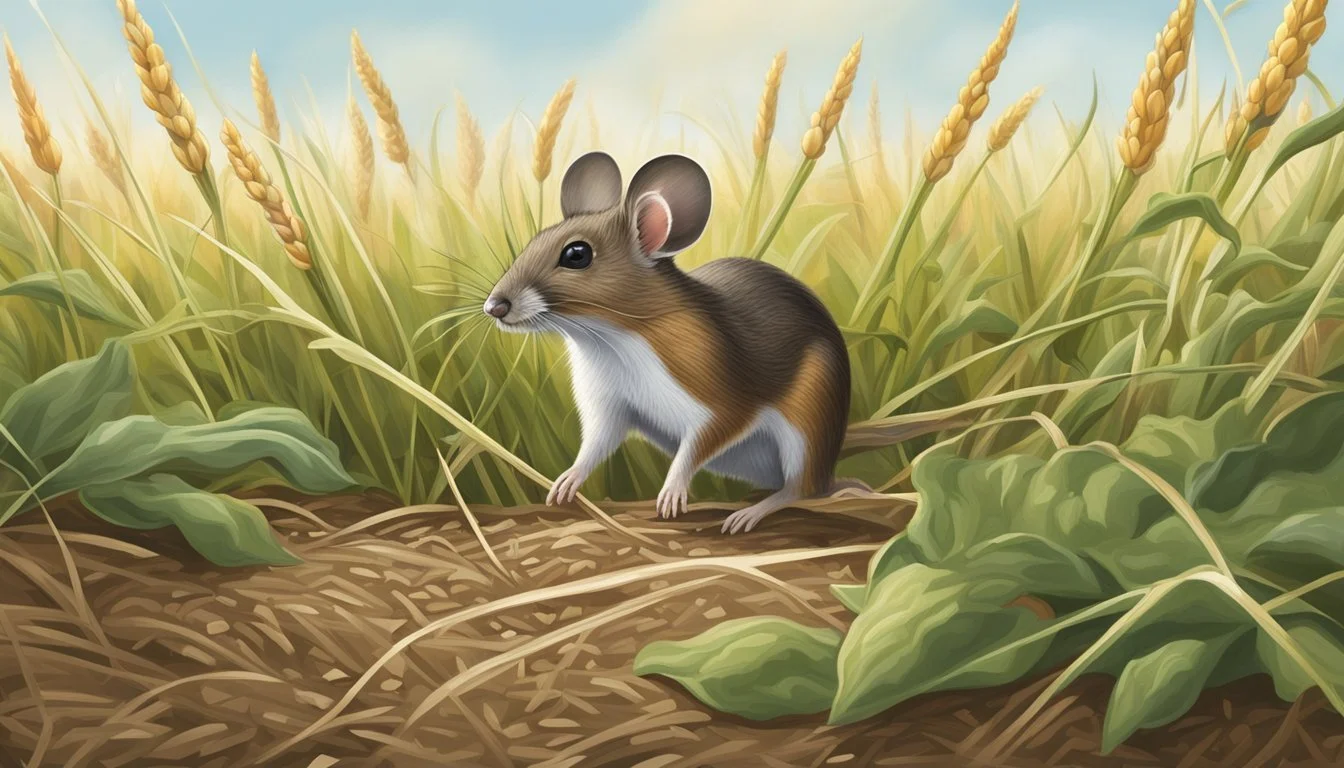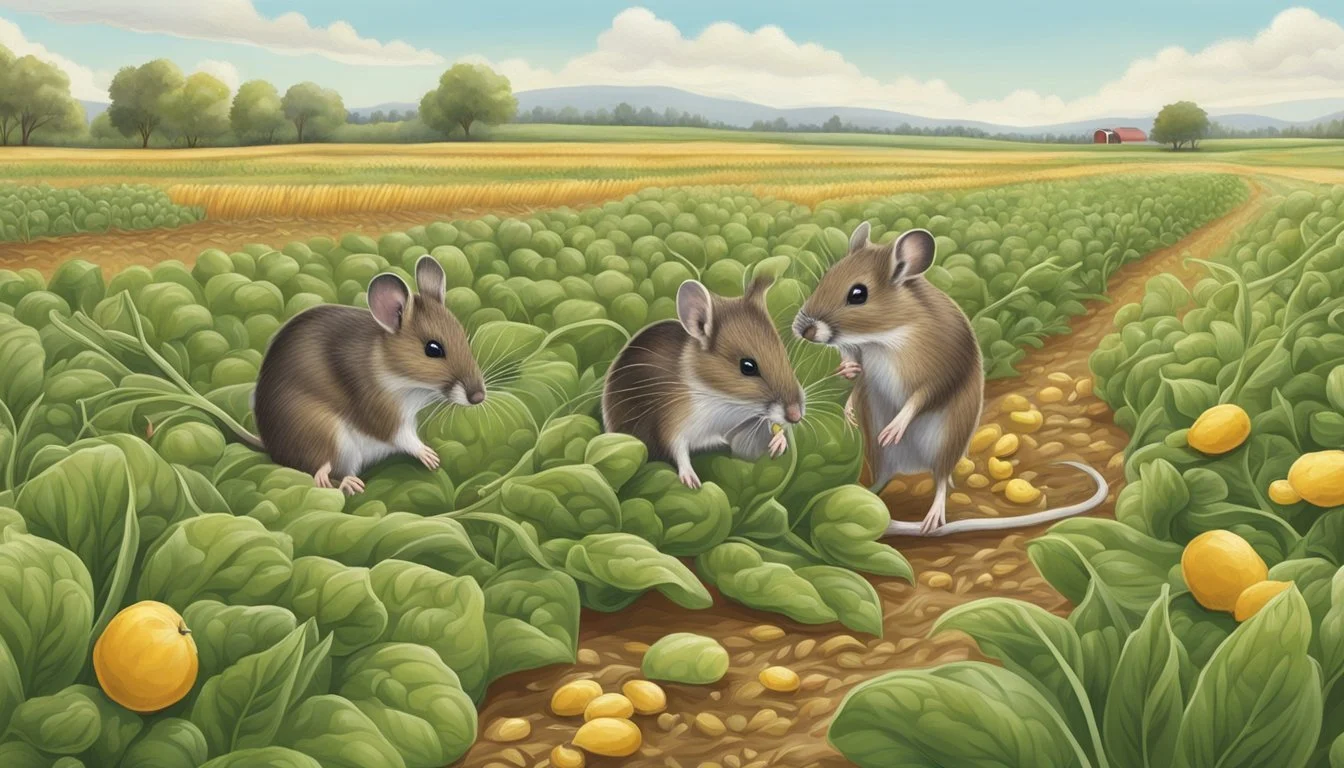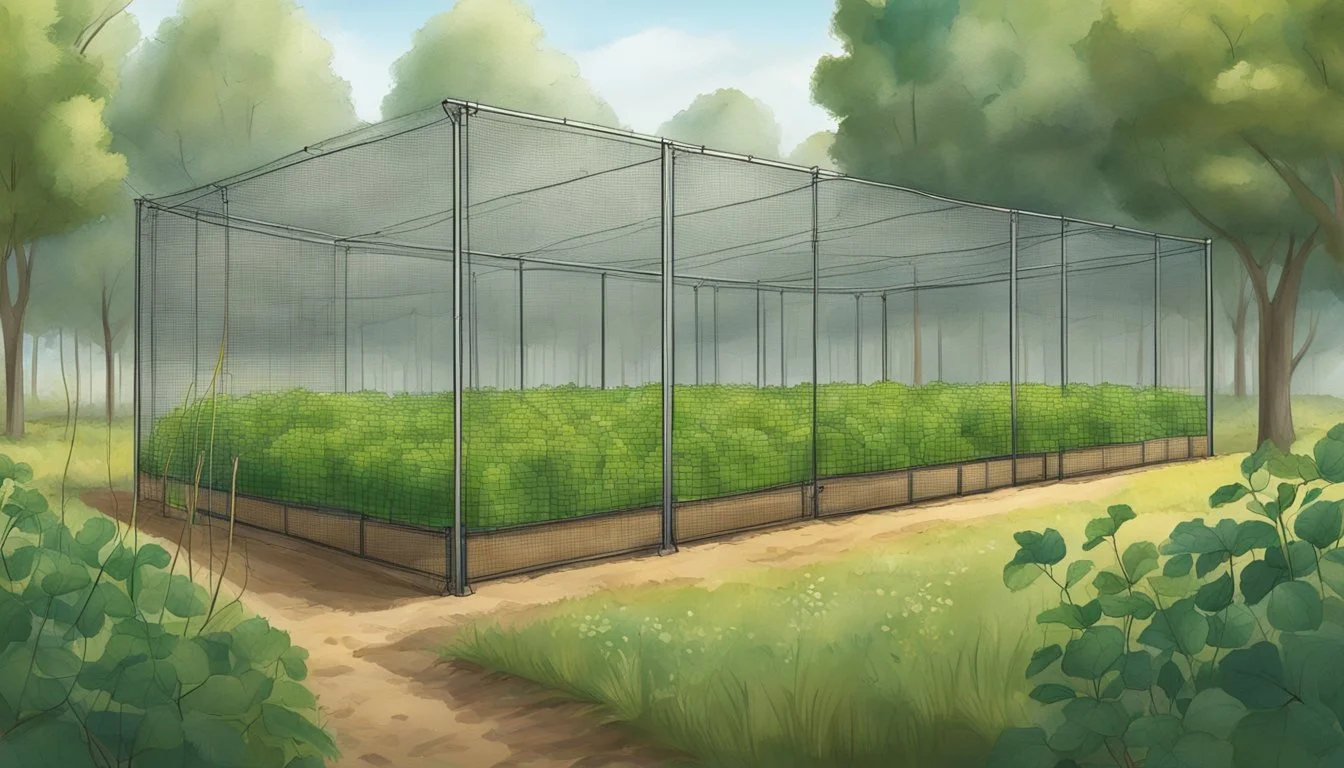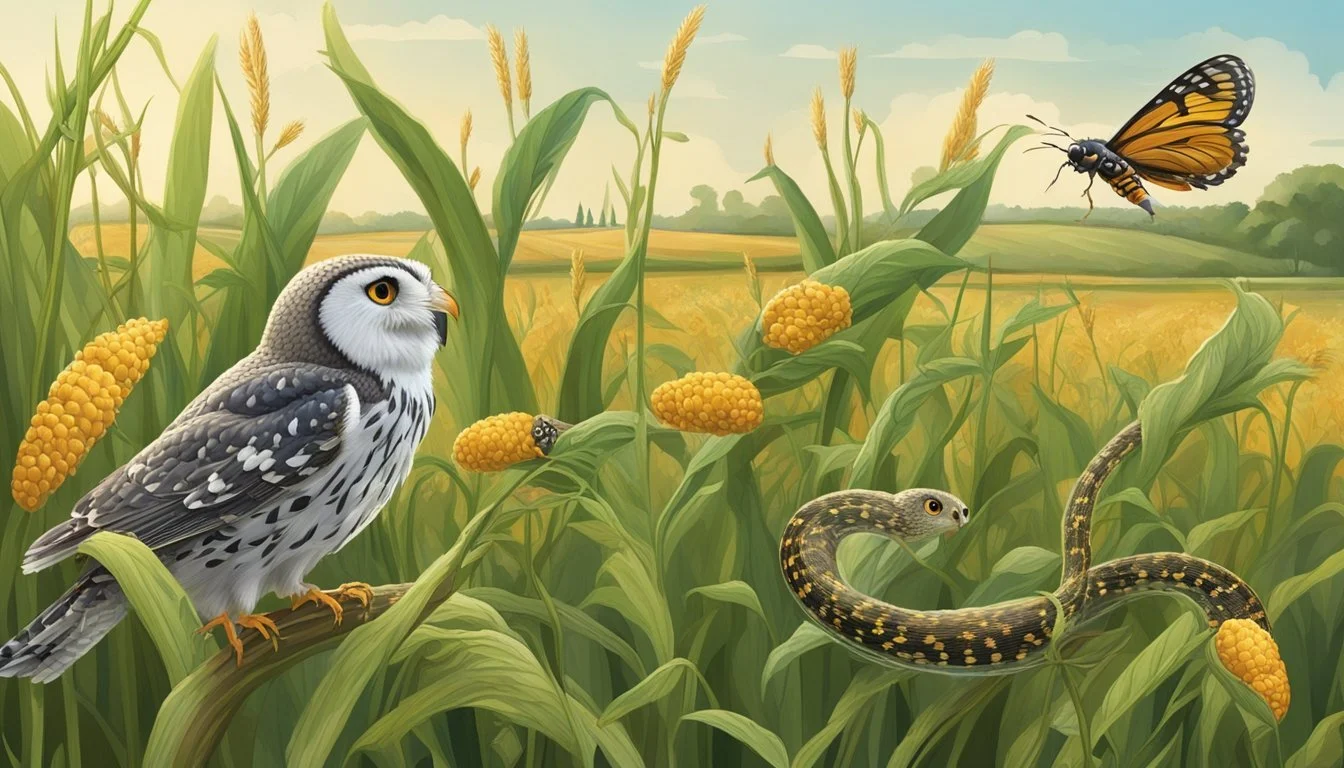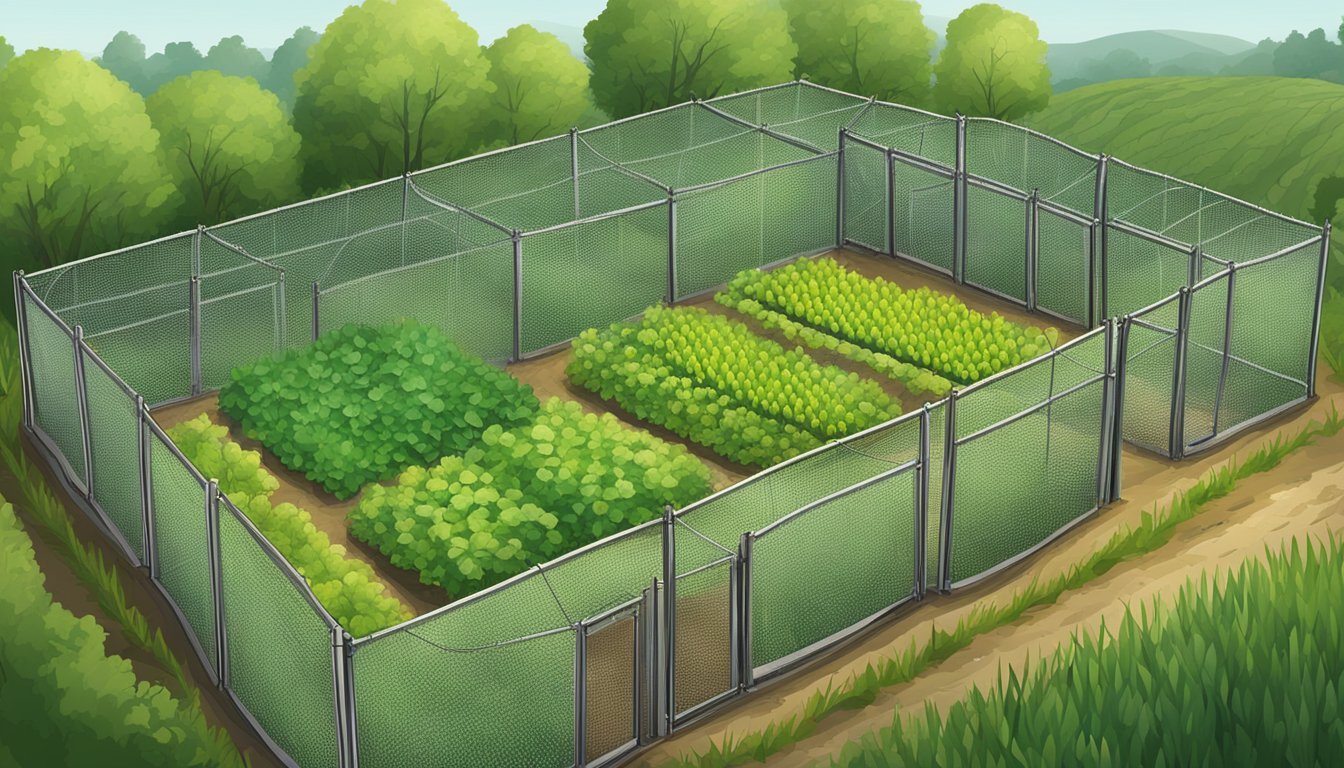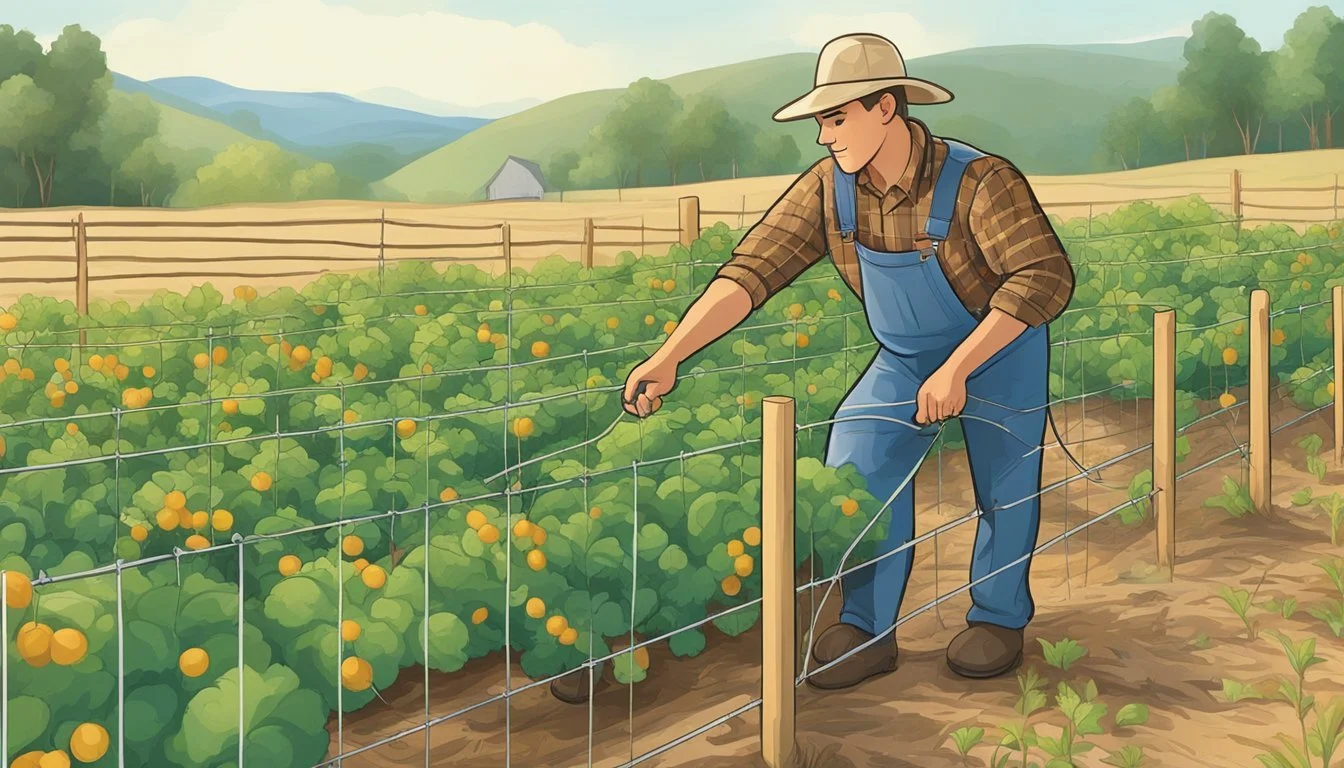Protecting Crops from Deer Mouse
Effective Control Strategies
The agricultural landscape often faces the challenge of protecting crops from various types of wildlife, among which the deer mouse poses a significant threat. These small rodents are not only adept at navigating through different terrains but also have voracious appetites, making crop protection a top priority for farmers and gardeners. An effective strategy involves understanding the behavior of the deer mouse and implementing targeted measures to mitigate their impact on crops.
Preventative actions, such as habitat modification and the use of repellents, play a crucial role in securing agricultural areas from these nimble pests. Fencing can serve as a physical barrier, although ensuring it is durable and appropriately sized is vital because deer mice are capable climbers and can exploit smaller gaps or weaknesses in the structure. Awareness of their feeding habits and breeding patterns can also inform the timing and application of deterrent techniques, improving their efficacy and ultimately safeguarding valuable crops from damage.
Understanding Deer Mouse Behavior and Habitat
In order to protect crops effectively, one must have a clear understanding of the deer mouse's natural tendencies and environmental preferences. This includes recognizing their habitat, behavioral patterns, and dietary needs.
Natural Habitat and Seasonal Patterns
The deer mouse (Peromyscus maniculatus) is native to North America and thrives in a variety of environments. They often inhabit areas that offer ample shelter and nesting sites, such as woodland forests, grasslands, and agricultural fields. Seasonal patterns affect their activity; during winter, they seek out warmer nests often closer to human dwellings, which can lead to them becoming a nuisance for crop protection.
Typical Habitats: Woodland areas, shrublands, agricultural fields
Nesting: Hollows, under rocks/logs, buildings (seasonal)
Seasonal Behavior: More likely to enter structures in colder months
Diet and Feeding Habits
Deer mice are primarily nocturnal and have a varied diet which changes with availability. They consume seeds, fruits, insects, and fungi, posing a threat to crops due to their feeding habits. During harvest seasons, when crops are abundant, they may cause considerable damage if not managed properly.
Foraging: Night-time, diverse food sources
Diet Components:
Plants: Seeds, grains, nuts, fruits
Invertebrates: Insects, caterpillars
Fungi: Various species depending on availability
Impact of Deer Mouse on Crops and Fields
The presence of deer mice in agricultural settings can lead to significant damage, as these rodents are known for their impact on both yield and crop quality. Adequate monitoring and identification are essential for managing these pests and protecting field crops.
Assessing Crop Damage
It is paramount to accurately assess the impact deer mice have on crops. They can cause considerable harm to a variety of field crops by consuming seeds and newly-emerged seedlings. This consumption can reduce plant density, damage seedling structures, and ultimately lower the crop yield.
Visual Inspection: Regular checks for irregular growth patterns and missing plants.
Quantitative Analysis: Measuring reductions in plant populations and correlating with mouse activity.
These methods together create a clearer picture of the direct consequence of deer mouse activity on agricultural output.
Identifying Signs of Deer Mouse Presence
To mitigate the damage caused by deer mice, one must be able to identify signs of their presence. They are distinguished from other rodents by their bicolored coat and relatively large eyes and ears. Key indicators of deer mouse infestation include:
Gnaw Marks: Visible on plants and can be attributed to their foraging behavior.
Droppings: Small, pointed at both ends, found near consumed or damaged plants.
Tracks and Burrows: Distinct footprints and excavation near crop lines indicating nesting and foraging sites.
Recognizing these signs promptly is crucial for preventing further damage and instituting control measures.
Methods of Deer Mouse Deterrence
Deer mice can cause significant damage to crops and their effective deterrence is crucial. Employing a combination of fencing solutions, habitat modification strategies, and repellents can offer substantial protection.
Fencing Solutions
Fencing is a foundational deterrent in protecting crops from deer mice. Electric fences serve as a powerful deterrent, delivering a harmless but effective shock to dissuade deer mice from entering an area. Alternatively, wire fences need to be of a particular specification: gaps should be no larger than 1/4 inch as deer mice can exploit larger openings to gain entry.
Habitat Modification Strategies
Modifying the surrounding habitat can reduce the appeal of the area to deer mice. Clearing vegetation and debris around crop fields eliminate potential nesting sites, creating an environment that is less inviting. Sealing entry points to structures, as small as 1/4 inch, can also be a critical part of keeping these rodents at bay.
Use of Repellents and Chemical Solutions
The strategic application of chemical repellents can discourage deer mice from inhabiting crop areas. It's important to select chemicals that are designed specifically for rodents, ensuring that they are both effective and compliant with safety regulations. Non-toxic options such as peppermint oil have also been identified as natural deterrents, capitalizing on the mice's aversion to certain scents.
Mechanical and Physical Control Measures
In the pursuit of safeguarding crops from the pervasive deer mouse, farmers and gardeners can implement several mechanical and physical control measures. These measures are designed to deter or prevent access, employing a range of materials and technologies.
Mesh and Wire Fences
Mesh and wire fencing serves as a robust physical barrier against deer mice. To be effective, the mesh size must be small enough to prevent mice from squeezing through. It is recommended to use a 1/4-inch hardware cloth as it offers a balance between durability and exclusion. The fence should be buried at least 6 to 12 inches underground to thwart digging attempts.
Electric Fence Designs
Electric fences act as a psychological deterrent, delivering a minor, non-lethal shock to deer mice attempting to infiltrate crop areas. They should be designed with the consideration of height and wire spacing appropriate to target the specific pest. The design should also factor in regular maintenance checks to ensure continuous functionality.
Top Wire: Aimed at preventing climbing
Ground Wire: Discourages digging and entry from the base
Physical Barriers and Micro-Exclosures
Physical barriers such as solid fencing or covers can be deployed around specific plants or smaller areas to create micro-exclosures. These exclosures must be inspected regularly and should seal tightly to the ground to prevent the deer mice from entering. In addition to commercial products, farmers may also employ homemade remedies crafted from everyday materials to protect vulnerable seedlings or high-value crops.
Biological Control and Natural Predators
In the quest to protect crops from the foraging of deer mice, biological control measures and leveraging natural predators offer significant benefits. These methods utilize the natural ecosystem to manage the deer mouse population.
The Role of Dogs in Deer Mouse Control
Dogs, particularly those breeds with strong hunting instincts, can be efficient at deterring deer mice from entering crop areas. Through their acute senses, dogs detect and chase away deer mice, reducing the likelihood of an infestation. They serve as an active control measure that requires minimal intervention once properly trained.
Leveraging Natural Predators
The natural resources at our disposal include a variety of predators that naturally curtail deer mouse populations. Predators such as owls, hawks, snakes, and even some species of beetles prey on deer mice, contributing to a natural balance. Encouraging these predators through habitat management, such as the installation of raptor perches or preserving woodland areas, can enhance their numbers and the control they exert on the deer mouse population. Italic is deliberately not used as not to overcomplicate the format.
Cultural Practices to Reduce Deer Mouse Problems
In managing agriculture to mitigate deer mouse issues, farmers must adopt strategic cultural practices that focus on crop selection and rotation, effective field sanitation, and considered management of food plots and surrounding landscapes.
Crop Choices and Rotation
Farmers can deter deer mice by varying the food they find available. Crop rotation that includes beans, corn, and soybeans makes it harder for deer mouse populations to establish themselves because the consistent change in food sources disrupts their feeding patterns. Rotating crops not only confuses pests but also inhibits the continuous supply of their preferred foods.
Field Sanitation and Weed Management
Proper field sanitation involves removing leftover crops and weeds that can serve as food and shelter for deer mice. Farmers should regularly clear their fields of debris and eliminate weed populations to reduce nesting materials for mice. This can involve ploughing under or removing crop residue after harvest and efficiently managing irrigation to discourage weed growth.
Strategies include:
Timely removal of crop residues post-harvest.
Maintaining clean field edges to reduce shelter options.
Regular mowing between crop rows, where applicable.
Food Plot and Landscape Management
Creating wildlife food plots away from crops and employing strategic vegetation management can redirect deer mice away from main crop areas. These plots can contain less valuable plants that serve as an alternative food source for wildlife, thus lessening the impact on primary crops. Additionally, managing surrounding vegetation and limiting the growth of dense underbrush can further discourage habitat formation.
Techniques:
Establish dedicated food plots with alternate food sources to lure deer mice away.
Implement regular cutting schedules for surrounding vegetation to maintain low habitat appeal.
Integrated Pest Management Approach
Integrated Pest Management (IPM) is a holistic methodology that combines various control strategies to manage pest populations. It emphasizes thorough monitoring and evaluation to ensure the effectiveness of the management efforts with the least possible disruption to ecosystems.
Combining Control Strategies
Integrated Pest Management (IPM) for controlling deer mouse populations in agricultural settings typically includes a variety of tactics. These often encompass:
Cultural controls: Modifying farming practices to make the environment less enticing for deer mice by removing clutter and potential nesting sites.
Physical controls: Employing fencing or barriers to physically prevent deer mouse access to crops.
Biological controls: Introducing or encouraging natural predators of the deer mouse into the area to naturally reduce their numbers.
Utilizing multiple strategies can help decrease reliance on any single method, like rodent poisons, which can lead to resistance and potentially harm non-target species.
Monitoring and Evaluation
To identify the current level of pest activity and determine the effectiveness of management methods applied:
Regular inspections: These should be carried out to assess signs of deer mouse presence, such as tracks, droppings, or crop damage.
Population surveys: Techniques to estimate the number of deer mice, which could involve live traps or tracking footprints.
Damage assessments: Evaluating the extent of crop damage periodically to correspond with pest population estimates.
Through ongoing monitoring, adjustments to control methods can be made based on solid evidence, ensuring that the integrated approach remains effective, environmentally sound, and economically viable. This careful evaluation process aids in making informed decisions about when and how to apply more aggressive measures if necessary.
Frequently Asked Questions
Addressing common concerns, this section provides targeted solutions for controlling deer mouse populations and protecting crops effectively.
What are effective methods for controlling deer mice populations in agricultural areas?
Farmers employ various strategies to manage deer mouse populations, including trap-and-release programs and securing food sources to reduce attraction. Regular monitoring is crucial to detect and address infestations early.
How can farmers safeguard their crops against deer mice damage, especially in winter?
To protect crops during winter, farmers need to enhance physical barriers such as fences and employ multi-layered exclusion techniques. Eliminating nesting sites near crop fields decreases the likelihood of incursion.
What are some natural predators of deer mice that can help manage their numbers in crop fields?
Birds of prey, snakes, and foxes are influential natural predators that keep deer mouse populations in check. Creating habitats favorable to these predators can help maintain a balanced ecosystem in agricultural settings.
Can you recommend environmentally friendly deterrents to keep deer mice away from plants?
Ultrasonic devices and natural repellents made from peppermint oil or capsaicin can deter deer mice without harming the environment. Strategic planting of mouse-repellent flora also serves as an eco-friendly option.
What are the best practices for preventing deer mice infestations in storage facilities and greenhouses?
Maintaining cleanliness, sealing entry points, and using enclosed storage units are best practices to prevent infestations. Monitoring for early signs of deer mice such as droppings or gnaw marks is vital for prompt action.
How do diet preferences of deer mice affect the choice of crops they target, and how can this knowledge be used in protecting crops?
Deer mice prefer seeds and fruits, thus they are often drawn to grains and orchard crops. Understanding these preferences allows farmers to focus protective measures on high-risk crops and use taste aversion or diversionary feeding strategies effectively.


